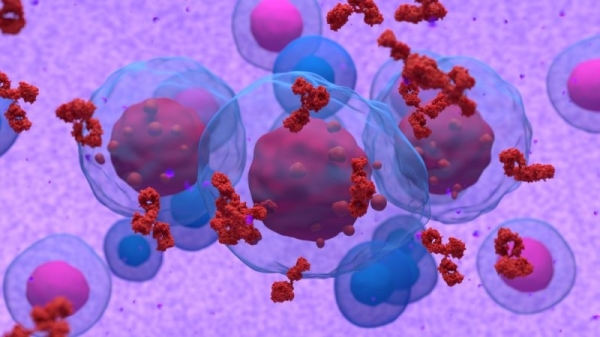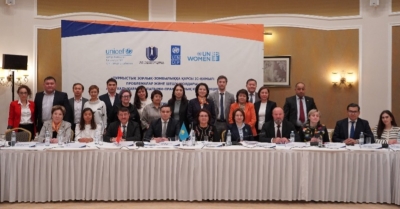Multiple myeloma therapies in Poland are becoming increasingly effective

Treatment of multiple myeloma has come a long way in Poland as the state has added more therapies in its reimbursable drug programme, stakeholders have said but stressed the need for more efforts on potential bone marrow donors who provide another vital treatment option.
“Treatment has improved significantly in recent times. Recently, substances that were not available for a long time, have been included in the reimbursable drug programme. This makes myeloma treatment more effective and free of charge in Poland,” UMED Professor Paweł Robak told EURACTIV.pl.
Multiple myeloma is a malignant cancer that attacks the human blood. Until recently it was considered fatal but is now said to be chronic – which means that it does not necessarily end in a quick death of the patient.
“Myeloma is a rare ailment, but among haematological malignancies, it ranks second. For oncologists, its treatment is a daily occurrence. Therapy involves the combination of several types of drugs, depending on the patient’s health and general condition,” the doctor explained.
The disease is difficult to diagnose and blood cells multiply uncontrollably.
There are currently approximately 10,000 myeloma patients in Poland while between 2,000 and 3,000 new cases are diagnosed each year.

Multiple myeloma patients face late diagnosis, unequal access to therapies
Delayed diagnosis and inequalities in access to treatments across the EU are among the main challenges in fighting multiple myeloma, an incurable and rare form of blood cancer.
With treatment, myeloma patients can survive from five to six years and sometimes even more than a decade. Unfortunately, myeloma is an incurable and relapsing disease: As many as 30% of patients diagnosed with this cancer in Poland die within 2.5 years from the start of treatment.
According to stakeholders, Poland is not lagging behind others in Europe as it reimburses drugs for patients suffering from myeloma, essentially making the treatment of the disease free.
“When it comes to the availability of myeloma treatment, we have nothing to be ashamed of in Poland,” Robak said.
Multiple myeloma therapy can be carried out in a number of ways.
One of the most important treatments a person with the disease can receive is a bone marrow transplant. Most often, myeloma patients are transfused with their own haematopoietic progenitor cells, which have previously undergone appropriate treatment outside the patient’s body.
In addition to this method, which can only be used for patients who meet the appropriate requirements (low enough age, no contraindications to transplantation), chemotherapy is also used to treat myeloma.
The drugs used to treat myeloma are a group of about 15 substances that have been registered in the last 20 years.
Poland updated the list of state-funded myeloma treatments in January 2023, which doctors describe as an “exceptionally big step forward” in the treatment of malignant tumours.
Bone marrow transplants
A bone marrow transplant is one of the more effective treatments for multiple myeloma. However, not every patient is suitable for this procedure – for example, transplantation is not performed on elderly patients, who make up the vast majority of myeloma patients.
A bone marrow transplant, if possible, is preceded by intensive chemotherapy and radiotherapy for the patient in order to reduce the number of cancer cells in their body as effectively as possible.
Another problem with bone marrow transplants is that it is difficult to find a ‘genetic twin’ from whom the tissue can be taken. Most often, family members become bone marrow donors, but in cases where this is not possible, it is necessary to look among registered donors for volunteers.
In Poland, more than two million people are registered in a database of potential bone marrow donors. As people dealing with oncology patients point out – this is still not enough.
“Patients first have to face the diagnosis and then the uncertainty that comes with the knowledge that their life fully depends on someone else. This is another stage of anxiety during the illness. You don’t know if there will be someone to help,” Dorota Raczkiewicz, president of the cancer patients foundation Drużyna Szpiku, told EURACTIV.pl.
“It is very important for the patient to have the feeling that this other person will be found and will not withdraw the decision to become a donor,” she added.
Raczkiewicz stressed that there are currently more than two million people in the Polish register of potential bone marrow donors while 15 years ago it was only just over 30,000 people.
“You can see the colossal work of activists, doctors and the media who have managed to convince the public that with a harmless procedure – a bone marrow transplant – someone’s life can be saved”, she noted.
After Germany, Poland has the second largest base of potential bone marrow donors in Europe. Across the continent, ten million people are registered.
“However, this is still not enough, as finding a genetic twin for a particular patient is difficult – and anyone in any country can develop cancer,” Raczkiewicz said.
In 2022, the A. Mielęcki Independent Public Clinical Hospital in Katowice – the leading bone marrow transplant centre in Poland – performed a record number (326) of blood-forming tissue transplants for the country, 57 of which required a separate donor.
In 2021, 310 such procedures were performed, and 312 in 2020.
More on the same topic...




